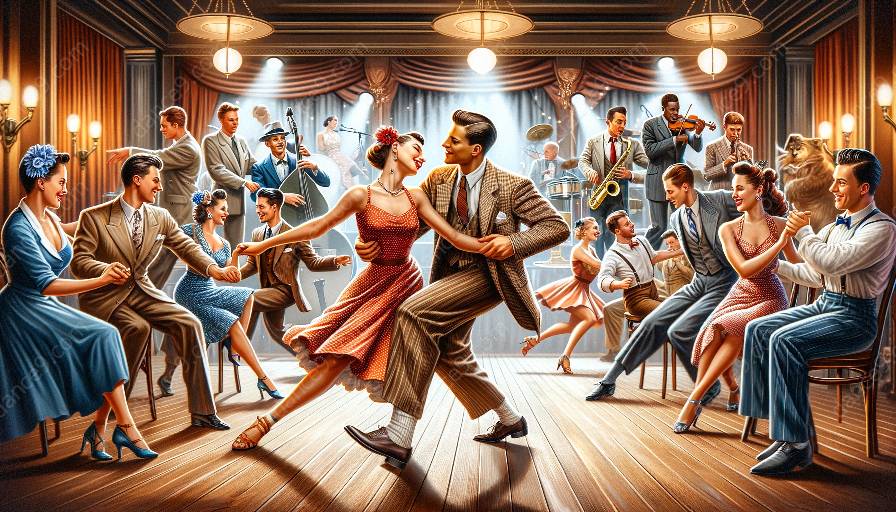Introduction:
Social dancing has long been a means of storytelling, communication, and emotional expression. Swing dance, a lively and energetic form of partnered dance that originated in the 1920s and 30s, is particularly adept at conveying emotions and narratives through movement. In this discussion, we will explore how swing dance expresses emotion and storytelling, and how these expressive elements can be incorporated into dance classes.
The Role of Music:
Music plays a vital role in setting the emotional tone of a dance, and swing dance is no exception. Whether it's the infectious rhythm of the Charleston, the smooth melodies of the blues, or the upbeat tempo of the Lindy Hop, swing dance is intimately connected to the musical expressions of its era. Dancers often use the music's emotional cues to guide their movements, whether they're expressing pure joy, flirtation, or melancholy. This connection to music allows swing dance to tell stories and evoke emotions that resonate deeply with both dancers and audiences.
Movement as Expression:
The physical movements of swing dance are a powerful vehicle for emotional expression and storytelling. From the energetic kicks and jumps of the Charleston to the fluid, flowing movements of the Lindy Hop, each step, turn, and gesture can convey a wide range of emotions and narratives. Dancers use their bodies to communicate joy, passion, humor, and drama, often engaging in playful exchanges and storytelling through their movements. By mastering the technical aspects of swing dance, dancers can fully embody the emotional and narrative components of the dance, enriching their performances with depth and authenticity.
Connection and Communication:
Swing dance is a partnered dance form that relies heavily on connection and communication between dancers. Within this connection, partners have the opportunity to express and convey emotions, share narratives, and engage in nonverbal storytelling. The physical connection between dancers allows for subtle cues and responses, creating a dynamic dialogue through movement. This intimate connection between partners not only enhances the emotive and narrative aspects of the dance but also fosters a deep sense of trust and collaboration, enriching the overall dance experience.
Teaching and Incorporating Emotion and Storytelling in Dance Classes:
For dance instructors, understanding how swing dance expresses emotion and storytelling through movement is essential for enriching the learning experience of their students. By emphasizing the emotional and narrative elements of swing dance, instructors can guide their students to not only master the technical aspects of the dance but also to become skilled storytellers and emotive performers. Teaching methods can include encouraging students to connect with the music, explore the emotional nuances of the dance, and engage in partner communication exercises to deepen their expressive abilities. By incorporating these elements into dance classes, instructors can inspire their students to develop a deeper appreciation for the art form and its capacity for emotional and narrative expression.
Conclusion:
Swing dance is a vibrant and expressive art form that beautifully captures the human experience through movement, music, and connection. By understanding how swing dance conveys emotion and storytelling, dancers and instructors can cultivate a deeper appreciation for the art form, enrich their performances, and create meaningful connections with their audiences. Whether you're a seasoned swing dancer or a dance enthusiast looking to explore the world of partnered dance, embracing the emotive and narrative elements of swing dance can enhance the joy, creativity, and storytelling potential of your dance experience.













































































